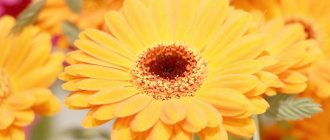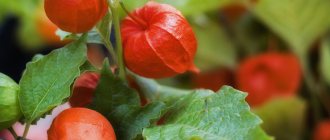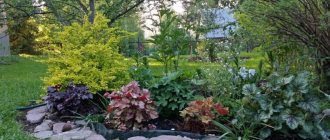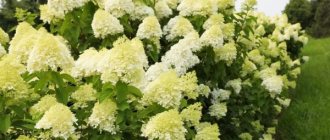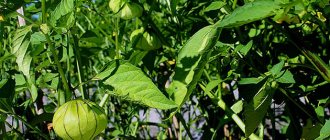Photo: oir.mobi The queen of school bouquets, bright and colorful gerberas look much better in a pot on the windowsill than in cellophane. All autumn it will delight you with lush flowering and will not cause serious inconvenience in care. Different varieties differ in size and color shades - you can collect a real rainbow! Let's tell you more!
How do they grow?
Beautiful gerberas can be grown from seeds or from cuttings of older plants. They love to bathe in bright sunlight and grow especially well in sandy soil. It’s great that gerberas can be grown both in the garden and in a pot on the windowsill - the flower is quite resistant to heat and winter cold.
The diameter of the flower can vary from 2.5 cm for decorative potted varieties to 12 cm for the most outstanding specimens. On average, the flower is quite large and reaches 7-10 cm in diameter.
Pest and disease control
The main pests for gerbera are the same as for other flowering plants. Modern insecticides do an excellent job of controlling aphids, scale insects, mites and whiteflies. At home, such problems almost never arise, especially if you thoroughly disinfect the substrate before planting in the oven or with potassium permanganate.
If the leaves fade and seem to burn out, it is most likely due to too intense lighting. Try to move the gerbera away from direct sunlight. The second reason for the pale and sickly appearance of a flower is the adaptation period if it was just purchased or transported to a new place.
If the bush deteriorates and begins to obviously rot, this is due to an excess of moisture or poor soil ventilation. The problem is that when the symptoms are already clearly visible, it is almost impossible to save the flower. Be sure to inspect your gerbera regularly, reduce watering in winter and do not use too cold water.
Photo: stridetail.ru
Possible difficulties
If there is rotting of the rosette of Gerbera leaves, the cause may be improper watering, in particular, moisture getting into the rosette. Low temperature of the plant can aggravate the situation.
Poor flowering is often caused by the lack or irregularity of fertilizing during budding, as well as insufficient levels of lighting and humidity. The flower does not like sudden changes in temperature.
Are there spots on the leaf blades, are the Gerbera leaves wrinkled and turning brown?
Both excessive and insufficient watering, infrequent ventilation, low temperature and lack of sunlight may be to blame. Editorial team LePlants.ru
Rest period
Gerberas, photos of the flowers of bouquets of which are often found on advertising brochures of flower boutiques, are at rest in the period from November to March. At this time, watering is reduced and the bushes are moved to a cooler room than during flowering.
Despite the fact that at this time the plant does not require careful care, you need to ensure that moisture does not stagnate in the container where it is located. To do this, do not fill the Transvaal daisy with water, do not humidify the air near it, and pour out excess liquid from the pan.
Gerbera – photo
The beauty and effectiveness of gerberas is not a myth, but an actual reality! Check out the photo to see how different and colorful it is!
Photo: pxhere.com
Photo: mioverde.ru
Photo: yellowhome.ru
Photo: oir.mobi
Photo: u-mama.ru
Photo: oir.mobi
Photo: pinterest.com
Photo: m.ok.ru
Photo: oir.mobi
Photo: mykaleidoscope.ru
Photo: oir.mobi
Photo: floraved.net
Photo: domashniecvety.ru
Photo: floraved.net
Photo: irecommend.ru
Photo: mkdou19.ru
Photo: ok.ru
Photo: funonnetgallery.blogspot.com
Photo: oir.mobi
Photo: oir.mobi
Photo: oir.mobi
Photo: mykaleidoscope.ru
Photo: mykaleidoscope.ru
Photo: domashniecvety.ru
Photo: mykaleidoscope.ru
Photo: mykaleidoscope.ru
Photo: mvazonchik.ru
Coleus (60 photos): types and features of care
First steps after purchase
Immediately after purchase (or even at the time of purchase), you need to inspect the plant for diseases and pests. If there are damaged leaves or spots, they need to be removed and the plant treated with special compounds. There is no need to water a newly purchased plant abundantly; it needs time to adapt.
After just two weeks, the Gerbera should be transplanted into new soil, and the pot must be equipped with drainage. The plants are taking root well.
Gerbera loves spraying with warm water or water at room temperature, which can be carried out throughout the entire growth and flowering period. To support the plant, it needs to be fed with mineral fertilizers once every two to three weeks. This will speed up the formation of buds and make the flowers more spectacular.
Description of the plant
Africa and the Asian tropics are considered the homeland of this large aster. It is described not only as a gerbera, but also as a Transvaal daisy or chamomile.
The flower is compact. Depending on the variety, the height of the plant ranges from small (25 cm) to tall (65 cm). Let us note the fact that the tall gerbera is only at the moment of its flowering. The height comes from the development of a leaf rosette; it is located near the surface of the ground.
The stem has many layers of leaves on short stalks. Leaf shape: dissected feathers, the center of the leaf is elongated. The pointed leaves can reach 30 cm in length. Color: dark green. Sometimes there is soft pubescence at the base of the leaf.
Garden gerbera blooms in August and September. The peduncle grows long, up to 80 cm, its entire surface is covered with pile. A peduncle grows from a leaf rosette. One may grow, but there may be several.
Only one flower blooms on a peduncle. Average basket size: from 10 to 16 cm. Hybrid gerberas are found with a basket up to 25 cm. There are a lot of petals, under the weight of them the gerbera slightly bows its head.
In the center of the basket there are small tubular petals, of which a lot grows. They are always darker than the main petals. Yellowish or dark yellow centers are more common. Along the edges there are reed petals in several tiers; they are much longer than in the middle.
The colors of the petals are the most diverse: pink, red, white, crimson, orange. Gerberas bloom for a long time, almost 4 months!
"Hot" questions
Even if you know how to care for potted gerbera, force majeure is unlikely to be avoided. Either the leaves will turn yellow, then flowering will stop prematurely, then just yesterday the flowers given to you will unexpectedly fall off, etc. Fortunately, Internet resources are full of useful tips and reviews that allow you to find a way out of any situation. To save your time, we have collected the most pressing questions here.
How long do gerberas last in water?
Freshly cut flowers retain their presentable appearance for up to 20 days. Store-bought ones can last up to two weeks (depending on transportation conditions and the freshness of the bouquet). To preserve your plants for as long as possible, use the following recommendations:
- Using a sharp knife or razor, cut a 3-centimeter piece of the stem diagonally under running cold water;
- covering the cut site with your finger, place the stem in a narrow vase so that the shoots “drown” in the water by about 5 cm, and the stems do not touch the bottom (an improvised frame made of wire or fishing line will help with this);
- place the vase away from bright sun, heaters and drafts;
- the room in which the bouquet stands should be shady and cool (10-18C);
- In the hot summer, spray the flowers with a spray bottle with cold water twice a day.
It happens that the midday sun manages to burn the delicate petals and timely help can save the plant from death. A cut gerbera can be revived almost like a person suffering from heatstroke. After placing the bouquet in a vase, cover it with a damp paper cap and place it in a cool place.
Advice! Feel free to shorten the stems every day and remember - the shorter the “leg”, the longer the flowers will remain fresh.
Are gerberas annual or perennial flowers?
Both garden and indoor plants are perennials. But specimens growing in open ground should be hidden from frost. Some gardeners do not do this, sincerely considering the luxurious flower an annual.
What kind of water can you put gerberas in?
You will significantly increase the lifespan of flowers by placing them in settled water at room temperature. The ideal option is rain or melt water, but if this is not available, tap water will do. Let it stand in the room for 5 hours and only then place the bouquet in it.
To extend the life of the bouquet, choose any of the following options:
- for 1 liter of water 1 teaspoon of citric acid or 5 tablets of activated carbon;
- slightly pink solution of potassium permanganate;
- store-bought fertilizers for fresh-cut flowers: “Bona Forte”, “Living Bouquet”, etc.
Attention! Do not add sugar to the water with gerberas if you do not want them to wilt quickly.
In order not to ask why the flowers of a recently gifted gerbera suddenly drooped, remember: the flowers should not come into contact with absolutely anything. Do not lean the bouquet against the wall, do not press the stems to the bottom of the vase, or leave the plants in the wrapper. A slight crease on a petal is enough to ruin the bouquet.
Briefly about cultivation
- Flowering: from late summer to early autumn.
- Lighting: bright diffused light. In autumn and winter, additional artificial lighting may be required.
- Temperature: during the growing season - about 20 ºC, in autumn and winter - 14-15, but not lower than 12 ºC. During flowering, the difference between day and night temperatures should be significant - at least 5 degrees.
- Watering: during the growing season - moderate, after the top layer of the substrate has dried. During the dormant period, the substrate is barely moistened so that it does not dry out completely.
- Air humidity: high, but you can’t spray the plant; it’s better to keep it on a tray with wet pebbles.
- Feeding: during the period of active growth, twice a month with complex mineral fertilizer for flowering indoor plants. In winter, no fertilizing is applied.
- Dormant period: from mid-autumn to late winter.
- Replanting: as needed in spring. Do not bury the socket in the ground.
- Substrate: loose, moisture- and breathable, with a pH of 5.5-6.0. You can use a ready-made soil mixture for asters or mix leaf soil with sand and peat in equal proportions.
- Reproduction: by seeds and division of rhizomes.
- Pests: aphids, whiteflies, scale insects, mealybugs.
- Diseases: the plant may suffer due to poor care or improper maintenance conditions.
Read more about growing gerberas below.
Color diversity of culture
It is the wide range of colors that makes the plant attractive. Almost any shade is found in nature, with the exception of blue gerberas. So, flowers are:
- scarlet;
- lilac;
- pink;
- lemon;
- yellow;
- coral;
- white;
- lilac;
- orange;
- creamy.
Plant varieties have been developed whose petals have many shades. Multi-colored gerberas are especially valued when creating flower arrangements.
Variety of colors
Reproduction
Gerbera propagates in three ways: by seeds, by dividing the bush into shoots and by cuttings.
Even in the most favorable indoor conditions, this flower will not be able to look attractive all the time. The time will come when the plant needs rebirth and renewal. This is not difficult to do, especially when you want to save the flower you like. The seed propagation method seems to be simple, but the result may not be pleasing. Gerbera seeds have extremely low germination rates. They should not be stored for more than six months. When purchasing them in a store, no one guarantees when these seeds are collected. Special attention must be paid to this fact.
Propagation by cuttings is used very rarely due to its low efficiency. Sometimes this method of reproduction is chosen at experimental stations.
But one of the most common and frequently used methods is propagation by dividing the bush into parts. This method allows you to make a large number of young plants from one adult plant. After such a procedure, an adult gerbera seems to acquire a second youth and continues to grow and develop.
This method of propagation cannot be carried out during the flowering period. As soon as the plant has bloomed (preferably in the summer), you need to very carefully remove it from the flower pot, lightly shake off the soil and divide it with a knife into as many parts as possible.
There is another option that allows you to leave the gerbera in a pot. The top layer of soil must be removed before the plant trunk appears. Then carefully divide it into two parts with a knife and sprinkle the cut areas with soil. After a short time, both parts will take root, this will be a signal of readiness for their placement in different containers.
- Seeds. They are sown in spring in a light soil mixture.
Pots or boxes are filled with a mixture of leaf soil, peat and fine sand. Scatter the seeds. They are lightly covered with sand on top. The surface is sprayed with a spray bottle. Next you need to create a greenhouse. The container can be covered with glass or a plastic bag. And put it in a warm, bright place. In a week the seedlings will hatch. In the “greenhouse” they can burn, so we remove the shelter. When two or three true leaves are formed, you can dive. Gerberas are transplanted into permanent containers when four to five leaves appear. Young gerbera from seeds blooms in six months to a year. - By dividing the bush. When transplanting, the variety you like is divided into several divisions, each of which should have two or three growing points. Children's roots are slightly trimmed, flowers are removed, and the sections are treated with charcoal. They can be immediately planted in permanent pots. So that the growth point remains on the surface.
- Cuttings. Perhaps the easiest way to propagate gerberas. A cutting with a piece of rhizome and one or two leaves is separated from the mother plant. Plant it in a separate pot filled with moist substrate. And put it in a warm sunny place.
- Gerberas are very good to cut. With their help, beautiful bouquets and floral compositions are formed. They look perfect surrounded by greenery and other flowers. But they are very capricious. And without special techniques they won’t last long.
